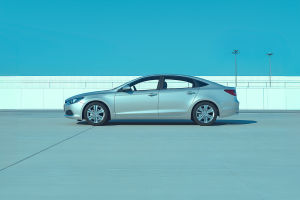We all love the freedom of riding a motorcycle. But when the weather turns sour, everything changes. Rain reduces traction, wind messes with our balance, and fog cuts down visibility.
That's why, when the skies go gray, we need to switch from casual riding to careful planning. Let's walk through the key ways we can stay safe when the weather's working against us.
Dress for the Conditions
The first step is making sure we're dressed right. If we get wet or cold, our reaction time drops—and that's dangerous on two wheels.
Here's what we should wear:
• Waterproof jacket and pants – Keep our entire body dry.
• Gloves with grip – Wet hands can slip easily.
• Anti-fog visor or goggles – To maintain clear sight in foggy or rainy conditions.
• Bright colors or reflective gear – So we stay visible to others on the road.
Staying dry and visible is half the battle.
Slow Down and Ride Smooth
Bad weather means lower traction. That's why speed and sudden movements can get us in trouble fast.
Let's focus on:
• Riding slower than usual
• Using both brakes gently and gradually
• Avoiding hard acceleration or sudden lane changes
• Keeping a longer following distance from other vehicles
Smooth is safe. The more predictable we are, the more control we have.
Watch the Road Surface
When it's raining or has just rained, certain road areas become more dangerous than others.
We need to avoid:
• Painted lines and metal plates – Super slippery when wet.
• Puddles – May hide deep potholes.
• Oil patches – Common near intersections.
• Leaves and mud – Can cause skids.
Staying in the center of the lane helps us avoid road edge hazards and unpredictable splashes.
Adjust for Wind and Fog
Windy and foggy conditions can really throw us off. Wind makes our bike unstable, and fog makes it harder for others to see us.
Here's how we can handle it:
• Ride upright and loosen our grip to stay flexible against wind gusts
• Lean slightly into the wind if it's steady
• Use low-beam headlights in fog
• Avoid riding next to large vehicles—they can create sudden wind shifts
• Take breaks if visibility is too poor to continue safely
Being aware of how the weather behaves helps us stay ahead of the risks.
Use Our Lights Wisely
Visibility is a big deal in harsh weather. Other drivers are struggling to see, just like we are.
Light tips:
• Keep headlights on at all times
• Use hazard lights when necessary
• Clean our lights and reflectors regularly
• Install additional LED strips for extra visibility
Being seen is just as important as seeing clearly.
Brake Earlier, Corner Slower
Braking and turning are the two moments where things often go wrong in wet or windy conditions.
Let's do it right:
• Start braking earlier than usual
• Use both brakes together and gradually
• Go wider and slower into corners
• Don't lean as hard as on dry roads
Remember, sharp turns and quick stops don't mix well with slick roads.
Know When Not to Ride
This might be the hardest part—but sometimes, the best safety choice is not riding at all.
Skip the ride if:
• There's a storm warning
• Flooding is expected or happening
• We feel overly anxious or unsure
• Our gear or bike isn't ready for bad weather
It's not weakness—it's wisdom.
Conclusion: Stay Alert, Stay Safe
Riding in bad weather doesn't have to be a nightmare. With the right gear, mindset, and preparation, we can still enjoy the ride and reach our destination safely.
Lykkers, have you ever had a challenging ride in rough weather? What helped you get through it? Let's share our stories and help each other ride smarter no matter what the sky looks like!


